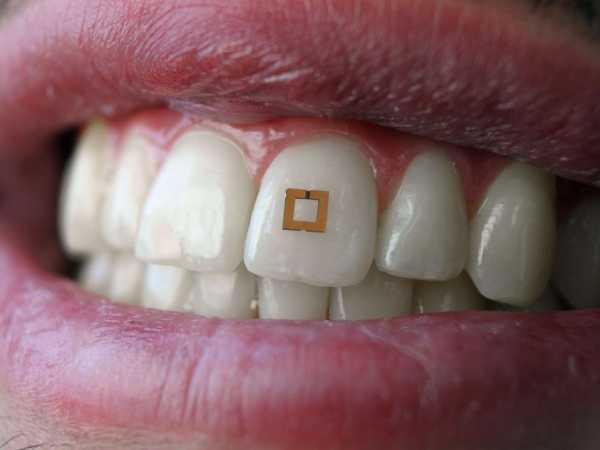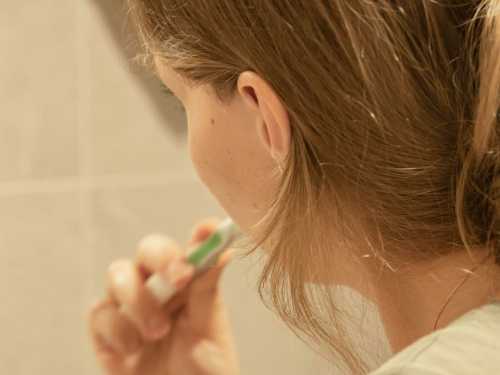
Tooth-mounted trackers that keep a tally on how much food and calories people consume could be the next frontier in fitness monitoring. A research team is already experimenting with the tooth sensors at the Tufts University Biomedical Engineering Department.
“We have extended common RFID [radiofrequency ID] technology to a sensor package that can dynamically read and transmit information on its environment, whether it is affixed to a tooth, to skin, or any other surface,” Fiorenzo Omenetto, Ph.D., corresponding author and the Frank C. Doble Professor of Engineering at Tufts said in a statement.
The sensors looks like custom microchips stuck to the tooth. They are flexible, tiny squares — ranging from 4 mm by 4 mm to an even smaller size of about 2 mm by 2 mm — that are applied directly to human teeth. Each one has three active layers made of titanium and gold, with a middle layer of either silk fibers or water-based gels.

Tufts UniversityResearchers at Tufts University are experimenting with sensors attached to human teeth that might be able to monitor food and caloric intake and send signals to nearby devices.
In small-scale studies, four human volunteers wore sensors, which had silk as the middle “detector” layer, on their teeth and swished liquids around in their mouths to see if the sensors would function. The researchers were testing for sugar and for alcohol.
The tiny squares successfully sent wireless signals to tablets and cell phone devices.
In one of their first experiments, the chip could tell the difference between solutions of purified water, artificial saliva, 50 percent alcohol and wood alcohol. It would then wirelessly signal to a nearby receiver via radiofrequency, similar to how EZ Passes work. They demonstrated that different concentrations of glucose, a type of sugar, could be distinguished, even in liquids that had sugar concentrations like those found in fruit drinks.
“In theory we can modify the bioresponsive layer in these sensors to target other chemicals –- we are really limited only by our creativity,” Omenetto said.
Part of the experimental research involved using different thicknesses of the middle layer to see which worked best. The study found that thinner middle layers allowed for better sensitivity to changes in liquids, but thicker layers responded more quickly. They discovered that high-salt liquids meant that the device took a longer time to reset, particularly when compared to alcohol-based liquids.
When the water-based gels were the center layer, the range of signals were able to be tuned to different acidity and temperatures, as well.
In this first experimental phase, the sensors are being tested with known solutions, to prove the concept works.
The researchers can’t predict how much this technology might cost, or when it might be ready for people to buy and use.
But, eventually, they hope the tiny mouth sensors could help people keep accurate logs of their diet and alcohol consumption.
Sourse: abcnews.go.com






